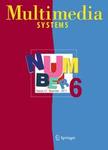版权所有:内蒙古大学图书馆 技术提供:维普资讯• 智图
内蒙古自治区呼和浩特市赛罕区大学西街235号 邮编: 010021

作者机构:School of Computer Science and Engineering Northeastern University Shenyang110819 China Engineering Research Center of Security Technology of Complex Network System Ministry of Education Shenyang110819 China Key Laboratory of Intelligent Computing in Medical Image Ministry of Education Northeastern University Shenyang110819 China
出 版 物:《Multimedia Systems》 (Multimedia Syst)
年 卷 期:2024年第30卷第2期
页 面:65-65页
核心收录:
学科分类:0831[工学-生物医学工程(可授工学、理学、医学学位)] 0810[工学-信息与通信工程] 1205[管理学-图书情报与档案管理] 08[工学] 0835[工学-软件工程] 0803[工学-光学工程] 0701[理学-数学] 0812[工学-计算机科学与技术(可授工学、理学学位)]
基 金:This research was supported by the National Natural Science Foundation of China (No. 62032013) and the Fundamental Research Funds for the Central Universities (No. N2324004-12)
主 题:Semantic Segmentation
摘 要:The dynamical system perspective has been used to build efficient image classification networks and semantic segmentation networks. Furthermore, the Runge–Kutta (RK) methods are powerful tools for building networks from the dynamical systems perspective. Hence, the Runge–Kutta segmentation network (RKSeg) for medical image segmentation was born. Skip connections and multiple scaling are often used in common models but lack mathematical explanations. RKSeg interprets and uses skip connections based on the RK methods. Therefore, RKSeg greatly improves segmentation efficiency. However, it does not explain and use multiple scales from a dynamical system perspective but only inherits the multi-scale scheme of existing models. We compensate for this shortcoming by interpreting and using multiple scales based on the RK methods. In addition, the network structure also limits the excellent image classification networks as the backbones of RKSegs. Therefore, we modify the network structure to support more image classification networks as backbones. As a result, we propose a novel network structure RKSeg+. Our proposed RKSeg+ achieves better segmentation results with fewer parameters than RKSeg. Furthermore, RKSeg+, well configured with few parameters, outperforms state-of-the-art models on six of the ten organ datasets in the Medical Segmentation Decathlon. © The Author(s), under exclusive licence to Springer-Verlag GmbH Germany, part of Springer Nature 2024.